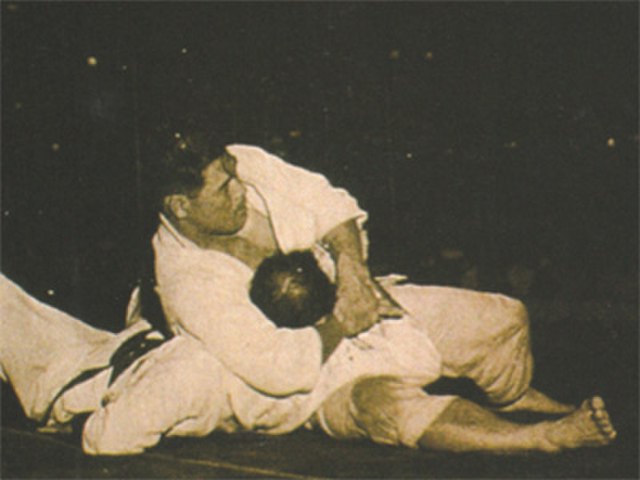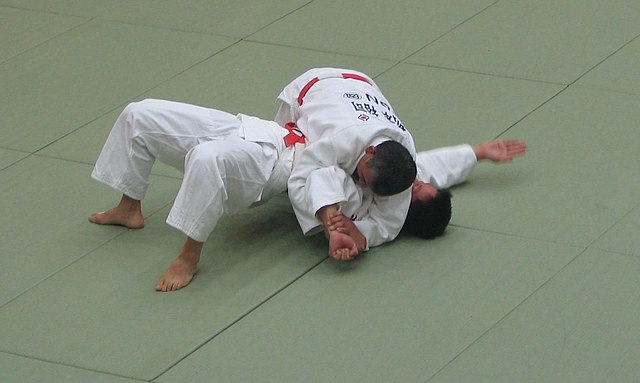Masahiko Kimura was a Japanese judoka and professional wrestler who is widely considered the greatest judoka of all time. He won the All-Japan Judo Championships three times in a row for the first time in history and had never lost a judo match from 1936 to 1950. In submission grappling, the reverse ude-garami arm lock is often called the "Kimura", due to his famous victory over Gracie jiu-jitsu co-founder Hélio Gracie. In the Japanese professional wrestling world, he is known for being one of Japan's earliest stars and the controversial match he had with Rikidōzan.
Masahiko Kimura
Kimura (right) along with his teacher Tatsukuma Ushijima (left).
Kimura vs Gracie, with the Japanese holding the Brazilian in a kesa-gatame.
An armlock in grappling is a single or double joint lock that hyperextends, hyperflexes or hyperrotates the elbow joint or shoulder joint. An armlock that hyper-extends the elbow is known as an armbar, and it includes the traditional armbar, the shoulder triangle armbar, and the shotgun armbar. An armlock that hyper-rotates the arm is known as an armcoil, and includes the americana, kimura, and omaplata. Depending on the joint flexibility of a person, armcoils can either hyper-rotate only the shoulder joint, only the elbow joint, or both the elbow joint and shoulder joint.
Armbar counter on the ground normally is a body roll towards the opponent in order to prevent overextension of the captured elbow bend
A fighter attempts to escape from an armbar by slamming the opponent to the ground.
Standard americana execution
Ude-garami (americana) being attempted in Judo kata







